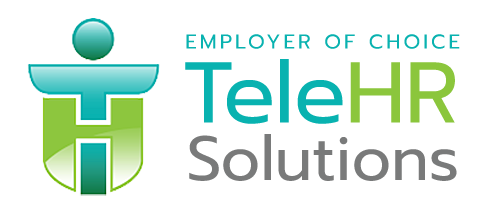As your company scales, finding the right HR and workforce solution becomes crucial. Two popular options for businesses—especially those expanding operations or entering new markets—are Professional Employer Organizations (PEOs) and Staff Leasing. While both models offer outsourced HR and administrative support, they serve distinct purposes and fit different business needs.
In this article, we break down the key differences between PEO and staff leasing, their advantages and disadvantages, and how to decide which solution is best for your organization.
What is the difference between the PEO and Staff Leasing?
Despite the ongoing trend of companies hiring Professional Employer Organization (PEO) service providers, misconceptions still abound within the business industry. One misconception that springs up all the time is that: a PEO employee relationship is the same as employee leasing.
Most likely, the confusion stems from the relationship that exists between a PEO and its client, called co-employment. Though many think that employee leasing and co-employment are one and the same; clearly, they are totally different.
To sort out the misunderstanding, let’s examine the difference between employee leasing and co-employment, and why PEOs are not the same as an employee leasing company.
What is Employee Leasing?
Staff leasing (also known as employee leasing or manpower outsourcing) involves hiring employees through a third-party agency. The agency serves as the legal employer, while your company directs and supervises the employees’ daily work.
The staff leasing provider handles:
- Recruitment and onboarding
- Payroll and government compliance
- Employment contracts
- HR administration
You get the workforce without the administrative burden of being their employer of record.
What is Co-Employment?
The National Association of Professional Employer Organizations (NAPEO) states, “The PEO relationship involves a contractual allocation and sharing of certain employer responsibilities between the PEO and the client, as delineated in a contract typically called a client service agreement (CSA).” Essentially, in a co-employment relationship, employees are jointly employed by two different entities – the client and the PEO.
Thus, The PEO does not supply the worker to their client. All employees are either with the client or are future employees hired by the client.
In a co-employment relationship, a PEO assumes certain employer rights, responsibilities, risk, HR administrative tasks and other. These can include:
- Payroll management of the clients’ workers
- Withholding, filing and payment of government mandated benefits
- Reporting, collecting, and depositing employment taxes with local and state authorities.
Meanwhile, the client retains control over the hiring and firing of its employees, and business leaders continue to make the day-to-day operating decisions for their company.
Co-employment Through a PEO and Employee Leasing Are Not the Same
We have mentioned the assumption about PEOs that the relationship they have with the client is employee leasing. Upon taking a closer look at the differences between employee leasing and co-employment (which is how PEOs operate), it becomes clear that the assumption is far from the truth.
- The glaring difference is that in co-employment relationship through a PEO, the PEO does not provide staff for their client. This responsibility of hiring new talents falls on the client after the PEO partnership is established.
- Instead of being a contractual or temporary worker, employees end up having two employers- the clients (the company who hired them) AND the professional employer organization. The PEO becomes the company of record/or Employer of Record (EOR) for HR, payroll management, employment compensation and benefits, employment taxes and other HR-related matters.
- Keep in mind that in a PEO relationship, business owners do not lose control of various aspects of their business, including their employees and hiring/firing decisions. This is another wrong assumption about PEOs. The client retains full- control of business while the PEO is an outsourced HR that handles the administrative tasks
When Should You Choose PEO?
A PEO is ideal if:
- You’re a growing SME without an in-house HR team
- You want to stay compliant with labor laws but reduce your administrative load
- You aim to offer competitive benefits but lack bargaining power with providers
- You need help managing multiple HR functions including tax, payroll, and risk mitigation
When Should You Choose Staff Leasing?
Choose staff leasing if:
- You need to scale your workforce quickly
- You’re hiring for short-term or project-based roles
- You want to avoid the complexities of direct employment
- You’re expanding to a new market or location with limited resources
The PEO Solution Is for You
Working with a certified PEO ensures business owners that they remain compliant with all HR and employment related laws and regulations. Instead of worrying of HR administrative tasks, the management can focus their efforts on business growth activities.
Health insurance, employee benefit offerings are easily accessible when working with a PEO, thus assisting in recruitment and employee retention. The PEO Partnership allows the client to maintain control and operation; and hire new employees as they see fit.
The misconception that PEO and employee leasing are the same; often, causes business owners and broker to scrap a PEO solution, even though a prosperous partnership is in the horizon. We hope this article clarifies the common confusion surrounding co-employment and employee leasing.
Perhaps the PEO solution is the competitive track that is aligned with your company goals and market entry.
Looking to expand your team in the Philippines? Whether you need a PEO partner or a reliable staff leasing provider, we can help you build a compliant and productive team. Contact us today for a free consultation! Call us at +63 917 892 2337 (mobile) or +63 284 785 826 (landline), or email us at [email protected]
